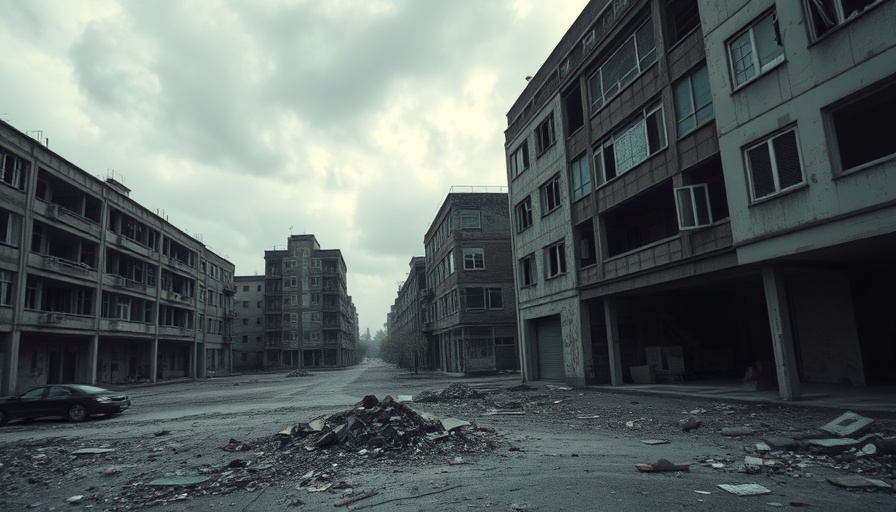
The Harsh Reality: Ukraine's Invasion and Its Aftermath
In a chilling insight into the course of the ongoing conflict between Ukraine and Russia, an exploration of the regions once invaded by Ukrainian forces reveals a landscape of devastation. While the broader geopolitical implications of this conflict can often overshadow the on-the-ground realities, the remnants of war—destruction, abandoned homes, and a palpable sense of loss—paint a vivid picture of its toll on both nations. As we delve deeper into this narrative, it's crucial to highlight not just the statistics, but the lived experiences that encapsulate the humanity behind the headlines.
The Human Cost of Conflict: Stories from the Ground
The human stories emerging from the conflict zones emphasize the profound impact of warfare. Citizens, displaced from their homes, carry tales of survival and resilience. Take Anna, a single mother who fled her village in Donetsk, only to find herself navigating the bureaucratic maze of asylum while grappling with the haunting memories of her former life. Such narratives underscore the urgency to recognize those who are often sidelined in discussions about military strategy: the innocent civilians who bear the brunt of political decisions.
Reflections on the Destruction: What Remains
A landscape once filled with life and culture now stands as a stark reminder of conflict. Buildings reduced to rubble, parks turned into makeshift shelters, and roads lined with abandoned vehicles tell a story all on their own. Towns like Shchastia, once vibrant and bustling, now echo with silence, as memories of community gatherings and bustling markets are replaced with the somber stillness of war. Critically, examining these spaces offers insights into the cultural and historical significance that is lost with each bomb dropped—these are not merely buildings, but carriers of community identity and heritage.
Future Predictions: Rebuilding in the Face of Despair
Looking ahead, discussions about rebuilding a war-torn Ukraine must not only focus on physical reconstruction but also on healing the psychological wounds of its residents. Mental health initiatives and community support programs will play vital roles in helping individuals, especially children, cope with the trauma experienced during the conflict. Moreover, lessons from other post-war regions across the globe can offer guidance on how to cultivate resilient communities in the aftermath of destruction.
Counterarguments: Diverse Perspectives on the Invasion
While the narrative of devastation is clear, diverse perspectives also emerge from various factions within Ukraine and Russia. Some argue that the invasion was a justified act of self-defense against perceived Russian aggression, while others promote a path of diplomacy and peace. Engaging with these contrasting viewpoints is essential to understanding the full scope of the conflict and exploring potential avenues for resolution. Each perspective, valid within its context, reflects the complexities of national identity and sovereignty at play.
Local and Global Perspectives: The Wider Impact
As global tensions rise and the world watches, the implications of this conflict stretch far beyond the borders of Ukraine and Russia. They touch on issues of energy security, international law, and humanitarian rights, compelling countries to reassess their positions in the global arena. Western nations are grappling with how to support Ukraine without escalating tensions further, illustrating the delicate balance between intervention and diplomacy.
Conclusion: A Call for Compassion and Awareness
As the situation continues to develop, it’s vital for the international community to remain engaged and compassionate towards those directly impacted by the conflict. The they often overlooked stories from the ground reveal the emotional and social scars far beyond mere physical destruction. Awareness leads to advocacy, and collective action can bring about change for those yearning for peace. To truly understand a conflict, one must not only view the statistics but also empathize with the narratives of real people caught in the crossfire of war.
 Add Row
Add Row  Add
Add 




 Add Row
Add Row  Add
Add 

Write A Comment